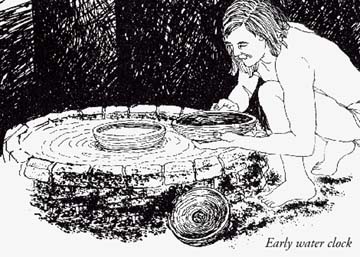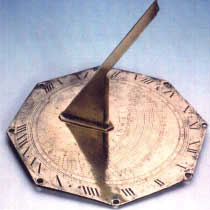time help us to wake up at morning...
time help us to now when we have do something....
Thursday, March 24, 2011
Wednesday, March 23, 2011
THE BEGINNING OF TIME
The Egyptians were the first people who created a twenty-four hour day. Time was a little bit different in those days. The night was divided up into twelve hours, which were designated by the position of stars in the sky. The day was divided into ten hours and a shadow clock was used to keep track of these hours. The twilight hours were the hours before dawn and after sunset.
The Egyptians thought they were the first to invent the shadow clock, but they were mistaken. At the same time, the Chinese, Babylonians, Greeks and the Romans were using instruments to tell time. Sundials were used in some of these groups, not because they work better, just because that's how they decided to tell time.
After a while, the Egyptians and other ancient societies realized that the sun rose and set in different places in the summer and winter. In fact, the sun never took the same course on any one day throughout the year! They tried everything, until they realized that if they would just put the post of the sundial in at a special angle, it would work all year.
TIME PAST.....
The measurement of time began with the invention of sundials in ancient Egypt some time prior to 1500 B.C. However, the time the Egyptians measured was not the same as the time today's clocks measure. For the Egyptians, and indeed for a further three millennia, the basic unit of time was the period of daylight. The Egyptians broke the period from sunrise to sunset into twelve equal parts, giving us the forerunner of today's hours. As a result, the Egyptian hour was not a constant length of time, as is the case today; rather, as one-twelfth of the daylight period, it varied with length of the day, and hence with the seasons. It also varied from place to place on the surface of the Earth. And of course, time as a measurable concept effectively ceased during the hours of darkness.
The need for a way to measure time independently of the sun eventually gave rise to various devices, most notably sandglasses, waterclocks, and candles. The first two of these utilized the flow of some substance to measure time, the latter the steady fall in the height of the candle. All three provided a metaphor for time as something that flows continuously, and thus began to shape the way we think of time.
Monday, March 21, 2011
Candle clocks
It is not known specifically where and when candle clocks were first used; however, their earliest mention comes from a Chinese poem, written in 520 by You Jianfu. According to the poem, the graduated candle was a means of determining time at night. Similar candles were used in Japan until the early 10th century.[38]The candle clock most commonly mentioned and written of is attributed to King Alfred the Great. It consisted of six candles made from 72 pennyweights of wax, each 12 inches (30 cm) high, and of uniform thickness, marked every inch (2.5 cm). As these candles burned for about four hours, each mark represented 20 minutes. Once lit, the candles were placed in wooden framed glass boxes, to prevent the flame from extinguishing.[39]
The most sophisticated candle clocks of their time were those of Al-Jazari in 1206. One of his candle clocks included a dial to display the time and, for the first time, employed a bayonet fitting, a fastening mechanism still used in modern times.[40] Donald Routledge Hill described Al-Jazari's candle clocks as follows:
The candle, whose rate of burning was known, bore against the underside of the cap, and its wick passed through the hole. Wax collected in the indentation and could be removed periodically so that it did not interfere with steady burning. The bottom of the candle rested in a shallow dish that had a ring on its side connected through pulleys to a counterweight. As the candle burned away, the weight pushed it upward at a constant speed. The automata were operated from the dish at the bottom of the candle. No other candle clocks of this sophistication are known.[41]
history
With respect to human history, timekeeping is a relatively recent human desire—probably 5000 to 6000 years old. It was most likely initiated in the Middle East and North Africa
Sunday, March 20, 2011
Subscribe to:
Posts (Atom)











